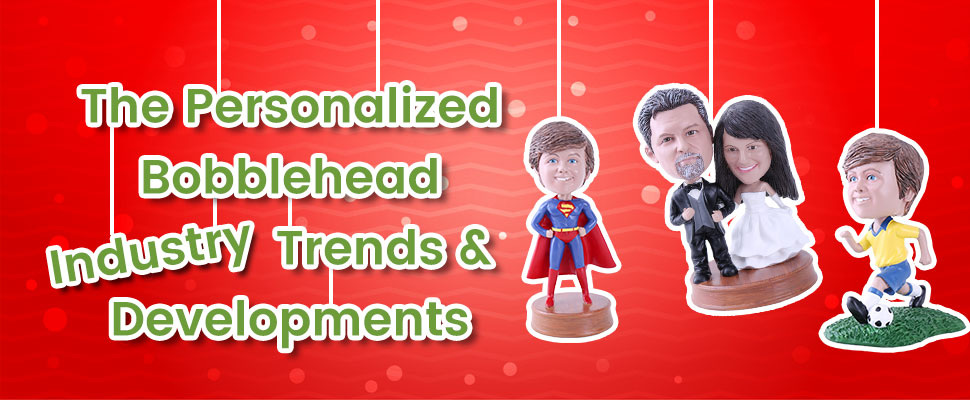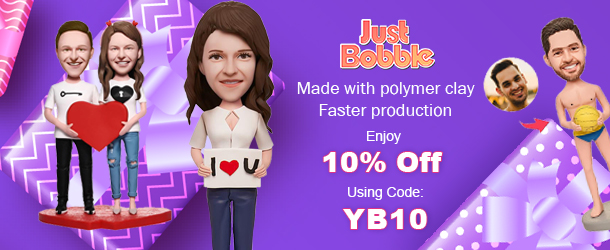
2016 saw the rise of a competitive market for personalized, on-demand bobbleheads, from a number of on-line vendors. To order, a customer just need to upload one or more facial color photos (with front view required, profile view optional) and chooses from a catalog of "stock bodies". Other order information includes color choices (eyes, clothing, etc.), quantity desired, and billing address & shipping address etc.
Available stock bodies span both popular and niche themes. These include professions, sports and hobbies, adult and child fashions (and plus-sized), sexy, zombie, graduations, weddings, super-heroes, awards, holiday, and funny. Sports regalia may be generic or licensed. Poses are standing, with some exceptions (astride a motorcycle, on a toilet). Besides statues of individuals, poses of couples include two adults (wedding-cake toppers) or parent-child. Family or small-team groups are possible. Statue bases are generally simple, but elaborations allow words or logos, or represent vehicles, sport playing areas, or bookends.
Personalized bobblehead production lends itself to low-volume manufacturing, and, as with other figurines and vinyl toys, typically occurs in Asia. To create a “stock body”, a master is first designed, with elongated neck pillar. It is then sculpted by an artisan with a modeling compound. A mold of this is taken, for casting mono-color end units (just-in-time or for inventory). These are custom painted for appropriate skin tone, and for desired (or default) colors of clothing, accessories, props, and base. (At a higher price, a customer can have a “custom body” designed, through companies like YesBobbleheads.com, which might become a future stock item.)
The head may also be done by the foregoing method, particularly for volume orders wanting identical deliverables. An alternative, especially for single pieces, is to directly sculpt the end-unit head from “polymer clay”, a colorized modeling material. The artisan uses one color of polymer clay for skin, another for hair. Painting if any is limited to eyes and feature enhancements. Finally, a less-common, higher-tech approach is to computer-design the head and generates it on an industrial 3D printer. This may then be painted, or, if the printer allows, texture-mapped from features derived from the original photos.













